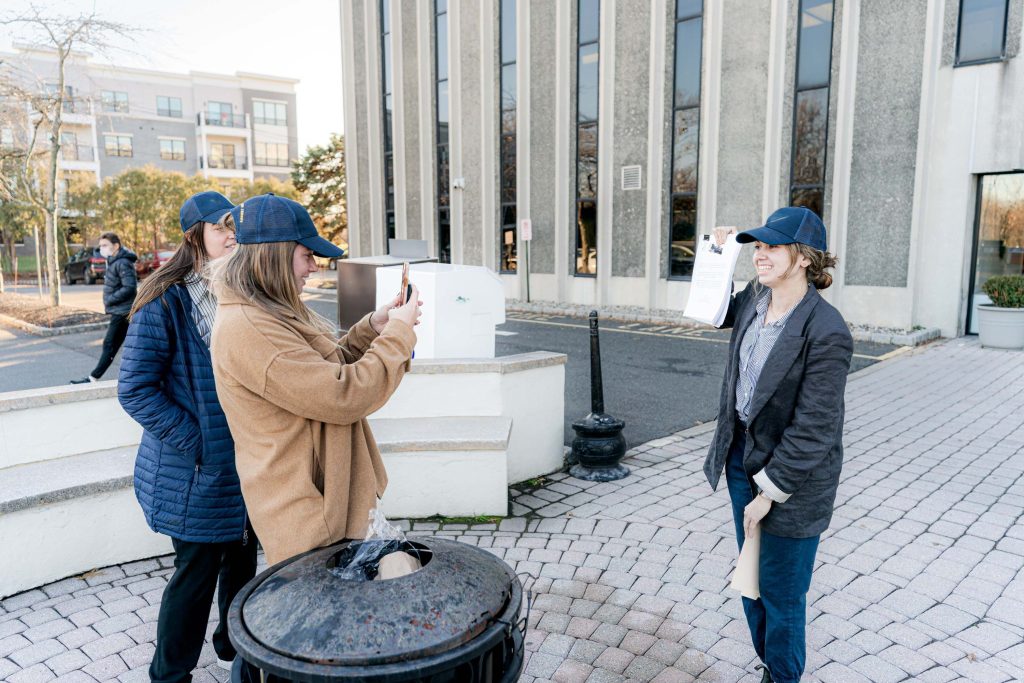By Hannah McGrath, Advocacy Campaign Fellow

So far, my 20s has meant making a lot of decisions. I’ve seen how choices like what classes to take, which jobs to apply to, or even what to eat for breakfast can ripple outward in unexpected ways.
During a summer in college, I decided to go grocery shopping with some new friends and one of them mentioned that they were working as a canvasser for an environmental non-profit. They asked if I needed a job. I did, and accepting that offer set me on a path of environmental policy that has lasted to this day.
For that first job, I was a part of a group that canvassed for a plastic pollution bill in Vermont. I biked up long, dirt driveways in Tevas and a sweat-stained shirt and asked strangers if they wanted to give money to a random girl whose passion for environmental policy bordered on overwhelming. I watched people weigh resources, values and urgency about whether or not to give in those moments.
Since June, I’ve been working as Mass Audubon’s Advocacy Campaign Fellow and witnessing a different caliber of decision making than I did in those early canvassing days. The decisions here last much longer than a few seconds and are far more strategic and collaborative.
Recently, much of my work has revolved around supporting Mass Audubon’s participation in the Nature for Massachusetts coalition. Together with over 80 other organizations from across the state, we are working to secure statewide funding for increasing access for nature and protecting water and land. I didn’t realize how much thought went into something like this until I saw the decision-making process unfold myself.
One moment that stands out was earlier this summer, when I and the other Environmental Fellows met with the Mass Audubon leadership team at a welcome lunch. At the end of the lunch, we began to talk about Nature for Massachusetts, and were asked about our thoughts on the pros and cons of the coalition proceeding with a tactic to take the measure to the 2026 ballot. The process for getting a question on the ballot takes a lot of hard work – the coalition needs to collect over 100,000 signatures from voters, which demands a real commitment of resources.
For the first time, I saw my peers contributing to these decisions. Our thoughts and opinions mattered here. We weighed in, considering the payoff versus the effort, and talked through what else was needed to support the decision-making process.
Through this fellowship, I’m imagining the future I want to create, and the kind of decisions that can help build it. Whether it’s choosing what to apply for, what campaign to focus resources on, or how to show up in a room full of leaders, I’m learning that every choice carries weight, even if I can’t see the outcome in front of me. Getting to be a part of campaigns that protect nature and people has shown me that this work isn’t passive. It’s something we choose, again and again.
Hannah McGrath (she/her) grew up in New Hampshire and got her start in environmental policy as a canvasser in Vermont. She earned her B.A from Hobart and William Smith Colleges as a double major in environmental studies and geoscience, and minored in public policy. She was also a student athlete on the field hockey team and conducted research microplastics in the atmosphere.
Before Mass Audubon, Hannah was an environmental organizer, where she led multiple environmental campaigns. During this time, she was a part of efforts to advocate for renewable energy, expand marine protected areas and ban plastic bags in California by collecting over 11,000 signatures.

